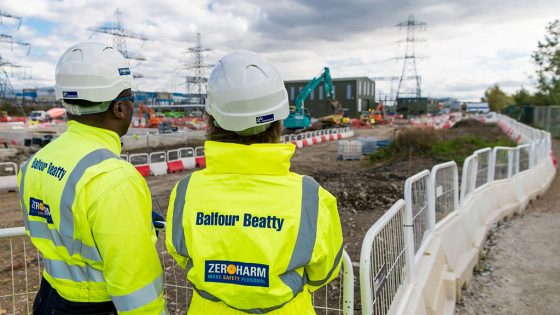Balfour Beatty has said that use of a digital platform co-run by its chief executive’s nephew has helped it achieve a record safety performance.
The plc has been working with AI-powered platform Site Assist since 2021 to digitise and streamline permit to work procedures on its sites.
Statistics provided by the contractor state that now it has deployed the software widely on its sites, it is in line to slash the number of service strikes on utilities from 200 in 2022 to a forecast 55 this year.
Site Assist Software Ltd was incorporated at Companies House in January 2021 by two founders, including Balfour Beatty chief executive Leo Quinn’s nephew Luke Quinn, who remains a director.
Balfour Beatty’s annual reports for 2022 and 2023 show it paid the company £1m in each of the years.
The payments were detailed as a “related party transaction”, a term that is used to highlight payments from a listed company to an associate of a director or major shareholder.
Earlier this month, Leo Quinn posted a message on LinkedIn talking about the importance of talking about how to improve safety on Balfour Beatty projects and named Site Assist as one of the digital tools it uses in order to do so. In a response, the software company’s LinkedIn account praised Leo Quinn’s leadership as “inspiring”.
Site Assist says it specialises in “easy-to-use, yet complex digital solutions” to help customers “ensure maximum safety and enhanced efficiency”.
There is no suggestion the contractor’s use of the platform is improper. According to its website, Site Assist’s other clients include Costain, Babcock and HS2.
A Balfour Beatty spokesperson said its lost time injury rate hit a record low in 2023, during 104 million hours worked in the group.
They added: “Appropriate controls are in place relating to Site Assist’s adoption and use and the related-party aspect has been formally disclosed.
“We’ve used Site Assist since 2021 as a tool to digitise and streamline the permit-to-work process on our projects. These permits are required for high-risk activities, such as digging or working at height, and ensure that the associated risks are properly managed.
“Our number one priority is workplace health and safety. We will do everything we can to make sure everyone goes home safe and well every day. We are very pleased with the positive impact our digital strategy is having on health and safety as well as on assurance, productivity and cost efficiencies.”
Quinn’s LinkedIn post added: “When you work in the construction and infrastructure industry, it can mean the difference between going home at the end of the day, or not. We simply can’t afford to be complacent, and we can’t afford not to take health and safety seriously.”

